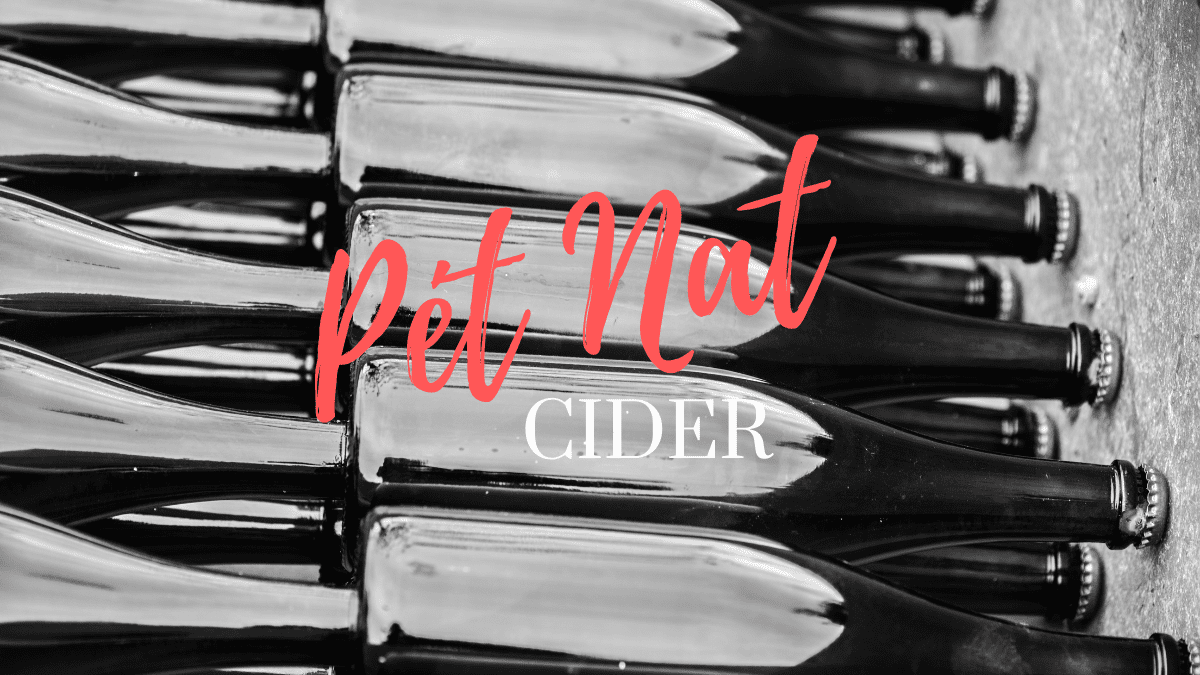Cidermakers are rediscovering the long, delicious history of pét nat ciders
At the tip of the hip cultural sphere in beverages sits “pét nat,” short for pétillant naturel — a French term that loosely translated means “naturally sparkling.” American wineries have brought it to the center of their making and marketing trends. But like most trends, something old is new again, and this traditional method for incorporating bubbles into beverages has been around a long time. Cideries have been using the pét nat method for years, now — particularly in France, but they are finding purchase in the United States in a push toward naturally bubbling ciders.
Promoting Additional Flavor Development
The pét nat process involves achieving carbonation through the fermentation process rather than infusing CO2 into the beverage. While still fermenting in closed containers, cider is bottled, allowing natural carbonation to occur as fermentation continues. “It allows us to promote additional flavor development in the cider,” says Justin Leigh, cidermaker at Dwinell Country Ales and Ciders in Goldendale, Wash.
Dwinell specializes in French-style ciders in the pét nat method. Here, fermentation takes place at cooler temperatures without the use of lab-created clarifying agents and with multiple racking to slow down fermentation and reduce sediments. “The larger bubbles, over time, will be reabsorbed into the cider and become finer and smoother. So when you drink it, it feels like the bubbles are just a natural part of the cider.”
Leigh says that the ciders he makes are also naturally fermented — no yeast is added to the fruit. Using pét nat, a truly natural process evolves. “My understanding of this method is that this was the traditional approach to cider making in Normandy,” says Leigh. Normandy is the place where the French tradition of cidermaking begins.
Complexity and Candy-like Aromas
But just because the method was around for cidermaking, it doesn’t mean that everyone knew about it. Katie Selbee and Matthew Vasilev of Twin Island Cider on Pender Island in British Columbia, Canada, started experimenting with pét nat in 2017. “At the time, there was very little information about making a pét-nat cider,” says Selbee. “I combed through academic articles about the pét-nat process in winemaking and we adjusted it as we felt would be needed to work with apples.” The result was the first pét nat cider on the market in Canada in 2018 according to Selbee. “It blew our minds with its complexity and the fun candy-like aromas that we hadn’t experienced with other methods like bottle-conditioning, so we have increased our pét-nat batches over the years,” she says.
Joe Gaynor, cidermaker for Angry Orchard Ciders in Walden, N.Y., says the company has been making pét nat ciders for about four years. He says the flavors are truly unique and evolve over time. “It’s always exciting to see the process live and get that super refreshing, apple forward, but still with that earthy body-taste. It’s even better to taste it, like, six or seven months later after it’s bottled.”
Angry Orchard is like most cideries in that pét nat is one method they use. Pét nat is less time consuming than other methods of fermentation, but there are flavor differences, and some apples work better for pét nat than others, so it’s not going to supplant all other fermentation methods. But because pét nat fermentation is shorter and doesn’t require the traditional method’s use of disgorging sediments, the cider can get to market quicker.
The Magic of the Little Tiny Bubbles
Christine Walter is a board member of the Cider Institute of North America and founder of Bauman’s Cider Company of Willamette Valley, Ore. She recently gave a presentation on pét nat ciders at Cidercon® in Richmond, Va., this year. “I’m a huge fan of pét nat wines,” says Walter. “I really kind of dug into it on the cidermaking side in just the last couple of years. I love the magic of the little tiny bubbles. It’s just so vibrant and raw.”
Walter says she adores the pét nat process because it doesn’t have the extreme aging needs, like in other cider-producing methods, or in wine. “You could sell it for a lot cheaper because there are fewer man-hours involved, but I’d actually pay more for a pét nat because I just love that sensation of the bubbles.”
Walter said that while it seems pét nat is a go-to method to produce cider, it’s not as easy as it seems. “There is certainly this idea that it could all go south,” she says. “You could miss the mark. The yeast could be in distress in the bottle and give off a bit of funkiness — there are some risks,” Walter says. “So there are probably about 5 percent of cidermakers really exploring pét nat as a method right now.”
While pétillant naturel method is nothing really new, pét nat as a method has become popular again, particularly among a younger demographic. Artisanal beverages are looking to a more traditional, more natural method of production that allows real expression of the fruit, while highlighting the care of craft producers. “We’re seeing a lot of growth,” says Walter of the cider industry. “I am really optimistic about the cider industry.”
This article originally appeared on our sister publication’s website www.cidercraftmag.com








